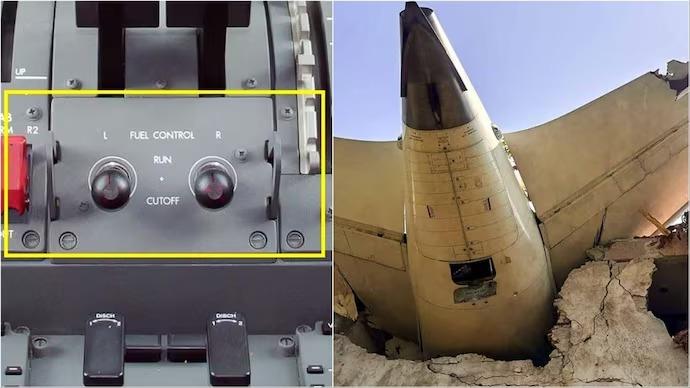In a critical development related to the fatal crash of Air India’s Boeing 787-8 Dreamliner VT-ANB on June 12 in Ahmedabad, it has come to light that Air India had replaced the aircraft’s Throttle Control Module (TCM) twice in the past six years, following a directive from Boeing. The replacements, made in 2019 and 2023, were part of a global maintenance protocol issued by Boeing in 2019, according to sources familiar with the matter.
The TCM, a key component in aircraft engine control, includes the fuel control switches which have now become a focal point in the ongoing investigation. The Aircraft Accident Investigation Bureau (AAIB), in its preliminary probe report released on July 13, noted that the fuel control switches were in a “cut-off” position immediately after takeoff, preventing the engines from providing adequate thrust. Although the switches were later turned on, it was too late to gain the necessary altitude, leading to the aircraft’s fatal crash into a building, killing all 260 onboard.
According to the AAIB report, the TCM replacements were carried out in line with a revised Maintenance Planning Document (MPD) issued by Boeing in 2019. The MPD mandates that operators of Dreamliner aircraft must replace the TCM every 24,000 flight hours. This directive was part of a broader maintenance enhancement plan and not directly related to any known malfunction of the fuel control switches.
A source told PTI that Air India had complied with the directive, replacing the TCM in the VT-ANB aircraft in 2019 and again in 2023. However, the replacements were not associated with any defect in the fuel control switches, and no issues had been reported regarding these switches since the last replacement.
Interestingly, the Federal Aviation Administration (FAA) had earlier flagged potential concerns around the fuel control switch locking mechanism. In December 2018, the FAA issued a Special Airworthiness Information Bulletin (SAIB) warning about instances where fuel control switches were found installed with disengaged locking features on Boeing 737 models. The concern, while noted, did not lead to a mandatory airworthiness directive as it was not considered an immediate safety hazard.
The AAIB’s report confirms that the fuel control switch installed in VT-ANB, identified by part number 4TL837-3D, shares design similarities with those in other Boeing models. Despite the advisory from the FAA, Air India did not conduct further inspection of the switches, since the SAIB was advisory in nature.
Boeing, in a statement issued on July 13, reiterated its commitment to supporting the ongoing investigation and said it would defer to the AAIB for specific findings, in line with ICAO Annex 13 protocol.
As investigations continue, no immediate safety directives have been issued for operators of Boeing 787-8 aircraft or the GE GEnx-1B engines powering them. The aviation world now awaits further clarity as investigators work to determine the exact chain of events that led to one of India’s most tragic air disasters in recent years.


.jpg)
.jpg)
.jpg)
.jpg)
.jpg)
.jpg)